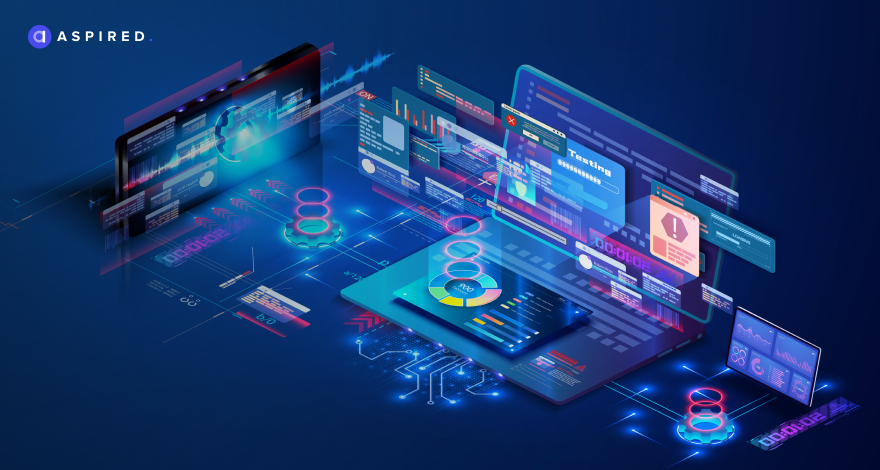The importance of data science has sky-rocketed in many industries, mainly due to the massive amount of data produced daily. This growth in popularity has caused several corporations to begin implementing this technology and its techniques to enhance customer satisfaction, achieve business growth and increase profitability.
If you’re looking to make optimum use of this technology for your business, you will fare well by getting acquainted with it first. So, today’s blog post will focus on explaining data science in all its intricacies, including its lifecycle, applications, prerequisites, and tools.
But before we get into the details, let’s start from the beginning and familiarize ourselves with what data science is.
What is Data Science?
Data science is a technological field that deals with extensive volumes of data through advanced tools and techniques to assess the data for recognizing unseen patterns and deriving meaningful information to make informed business decisions.
Going into the thick of it, data science mainly uses robust programming systems and hardware alongside efficient machine learning algorithms for creating predictive models and solving data-related problems. The data used within these processes can be acquired from several resources and presented in varying formats. If we had to give a brief overview of what data science entails, we’d say it’s all about.
- Analyzing raw data to answer questions and solve business problems
- Modelling data through complex machine-learning algorithms
- Understanding data to make informed decisions and find optimum results
- Visualizing data to gain an enhanced perspective
Now that we’re through with the basics, we can finally take a deep dive into the world of data science in all its detail.
Lifecycle
The data science lifecycle can be divided and explained in the following phases.
Discovery
Starting a data science project involves the discovery phase, where we ask relevant questions, which can be about basic requirements, project budget, priorities, and goals, all of which are related to the business problem that’s being addressed. The main requirements of the entire project have to be determined, which can include the following.
- The number of people
- Amount of Data
- Technology
- Time
- End goal
Determining this data then allows us to move forward and frame the business problem on a hypothetical level.
Data Preparation
The data preparation phase is all about taking the raw data and refining it into a format that can be used for our project. This phase mainly involves the following tasks.
- Data warehousing
- Data cleaning
- Data reduction
- Data integration
- Data transformation
- Data Architecture
These tasks allow the data to be used in further processes.
Model Planning
This phase is concerned with determining those techniques and methods that will enable us to establish relevant relations between input variables. Here, exploratory data analytics are applied using several visualization tools and statistical formulae. This allows us to understand the underlying relations between variables and see what information can be gained from the data.
Tools that are used for these tasks include:
- SQL analysis services
- Python
- SAS
Model-Building
The model-building phase is where we develop data sets to be used for training and testing purposes. The process mainly involves applying various techniques, including clustering, classification, and association, enabling us to build the entire model.
A few noteworthy model-building tools are provided as follows:
- MATLAB
- SPCS Modeler
- WEKA
- SAS Enterprise Miner
Operationalize
After the model has been built, we operationalize it; through this step, we can generate the final reports of the entire project along with its technical documentation, codes, and briefings. In addition, this phase provides an in-depth overview of the entire project’s performance and various other components on a smaller scale as full deployment is yet to occur.
Communicating Results
The first step in the final phase is to assess whether we have achieved the goals we set in the initial phases. In accordance with this, the project’s results thus far are communicated with the business team so that they can understand the underlying business problems and how they can achieve the preset objectives to solve the problem.
Applications
Healthcare
Data science is benefiting the healthcare industry to a great degree as it is being used to conduct medical image analysis, tumor and cancer detection, and the creation of virtual medical bots.
Risk Detection
Several businesses in the finance industry have been facing the problem of fraud and risk of losses recently due to the increasing level of cybercrime and hacking. However, data science is helping to reduce these adversities by creating risk detection, which minimizes the number of losses, all while increasing customer satisfaction.
Image and Speech Recognition
A prominent area where data science is making substantial contributions is the image and speech recognition. This image recognition technology is often seen in social media, such as Facebook, which can recognize users’ faces and provide suggestions to tag your Facebook friends. On the other hand, speech recognition can be seen in voice assistants such as Siri and Cortana, which respond to voice control achieved through a speech recognition algorithm.
Recommendation System
Several multinational companies, including Google, Netflix, and Amazon, use data science to create enhanced user experiences by integrating personalized recommendations. This is evident when you search for a specific show on Netflix; you start getting recommendations for similar shows and movies, which is all possible through data science.
Prerequisites
Programming
Programming knowledge is essential for executing data science projects, as data scientists require a sound understanding of the technicalities faced within such projects. Python is a popular programming language in this domain, as it supports multiple data science and machine learning libraries.
Databases
Data scientists must understand the working of databases to manage the data within them and know how data can be extracted from them.
Machine Learning
Machine learning is often considered the backbone of data science because it allows the generation of intelligent systems that can use data science algorithms to make image and speech recognition possible.
Statistics
Statistics are at the core of data science, and a good understanding of this domain can allow data scientists to extract valuable intelligence with which more meaningful and accurate results can be obtained.
Modeling
Mathematical modeling is an integral part of machine learning as it enables data scientists to conduct quick predictions and calculations by what they already know about the data. It also involves identifying the most suitable algorithms for solving problems and training such ML models.
Tools
Data scientists have to use several tools to carry out relevant activities effectively; these activities and the tools that are used within them are provided as follows.
Data Analysis
- Python
- R Studio
- RapidMiner
- SAS
- MATLAB
Data Warehousing
- SQL
- AWS Redshift
- ETL
- Hadoop
- Talend/Informatica
Machine Learning Tools
- Azure ML studio
- Mahout
- Spark
Data Visualization
- Tableau
- Cognos
- Jupyter
Conclusion
By clearly understanding data science, its lifecycle, and applications and arming yourself with its relevant prerequisites and tools, Data scientists can provide accurate and practical solutions to overcome prevalent business challenges and make data-driven decisions that can result in corporate success.
With data science being of the utmost importance for businesses in today’s digital age, you can expect to face a fair amount of competition if you aim to acquire skilled data scientists. But what if there was a way to completely bypass all this competition and gain talented individuals without worry?
Aspired is a remote staffing agency that can make this thought a reality by providing your businesses with pre-vetted remote tech talent with the knowledge and skills to effectively understand and apply data science, along with leveraging its tools to deliver effective business solutions and predictions. Our aspiring remote personnel is waiting to take your business to the next level, so act fast and connect with Aspired!

 Clients
Clients
 Processes
Processes
 Blog
Blog










